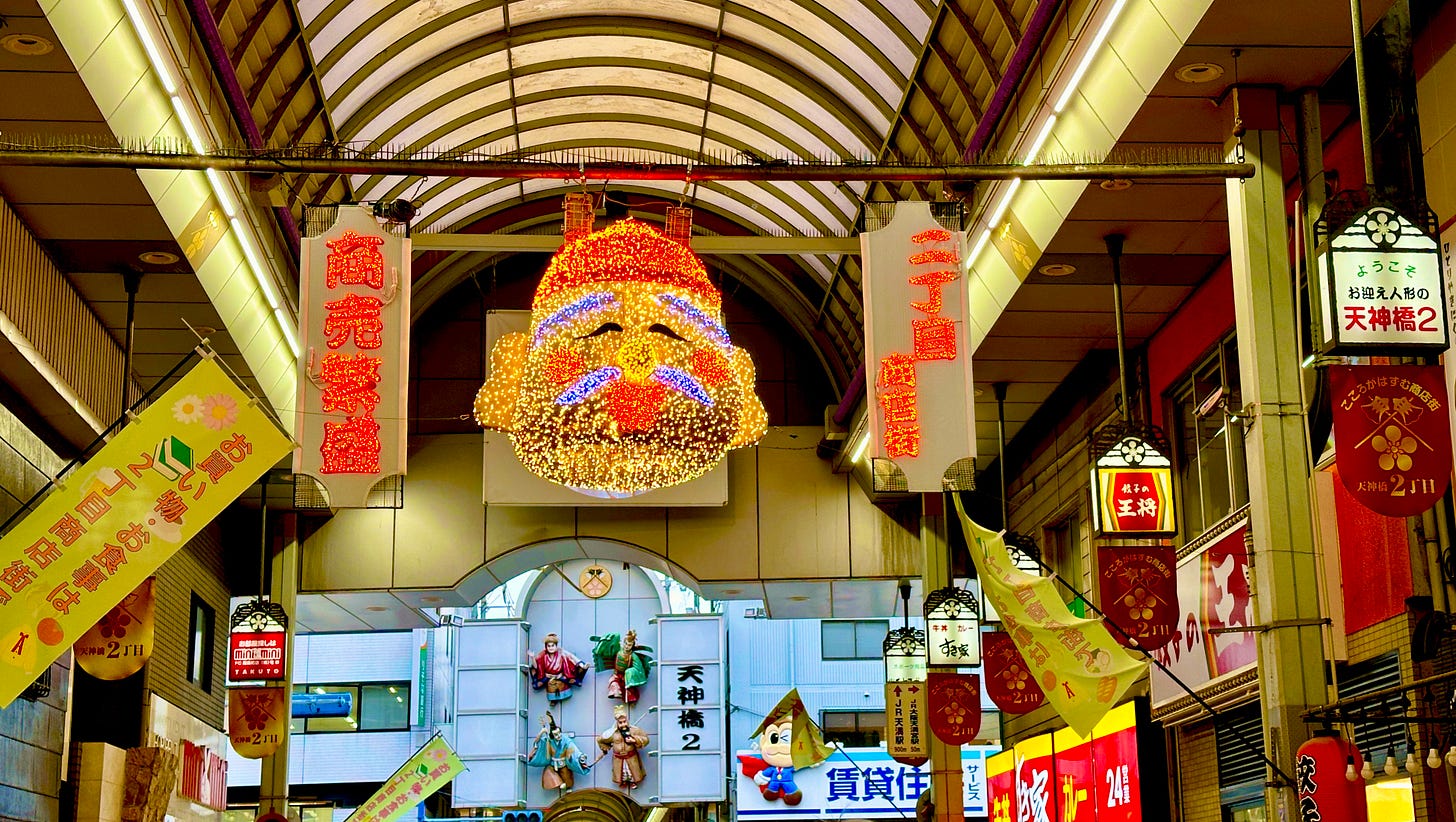
“I finally discovered the meaning of Christmas in Japan,” I told my husband as we wandered goggle-eyed through myriad displays of brightly colored holiday goods during a quick visit to Japan.
“What is it?” he asked.
“Shop till you drop (and never sit down)!”
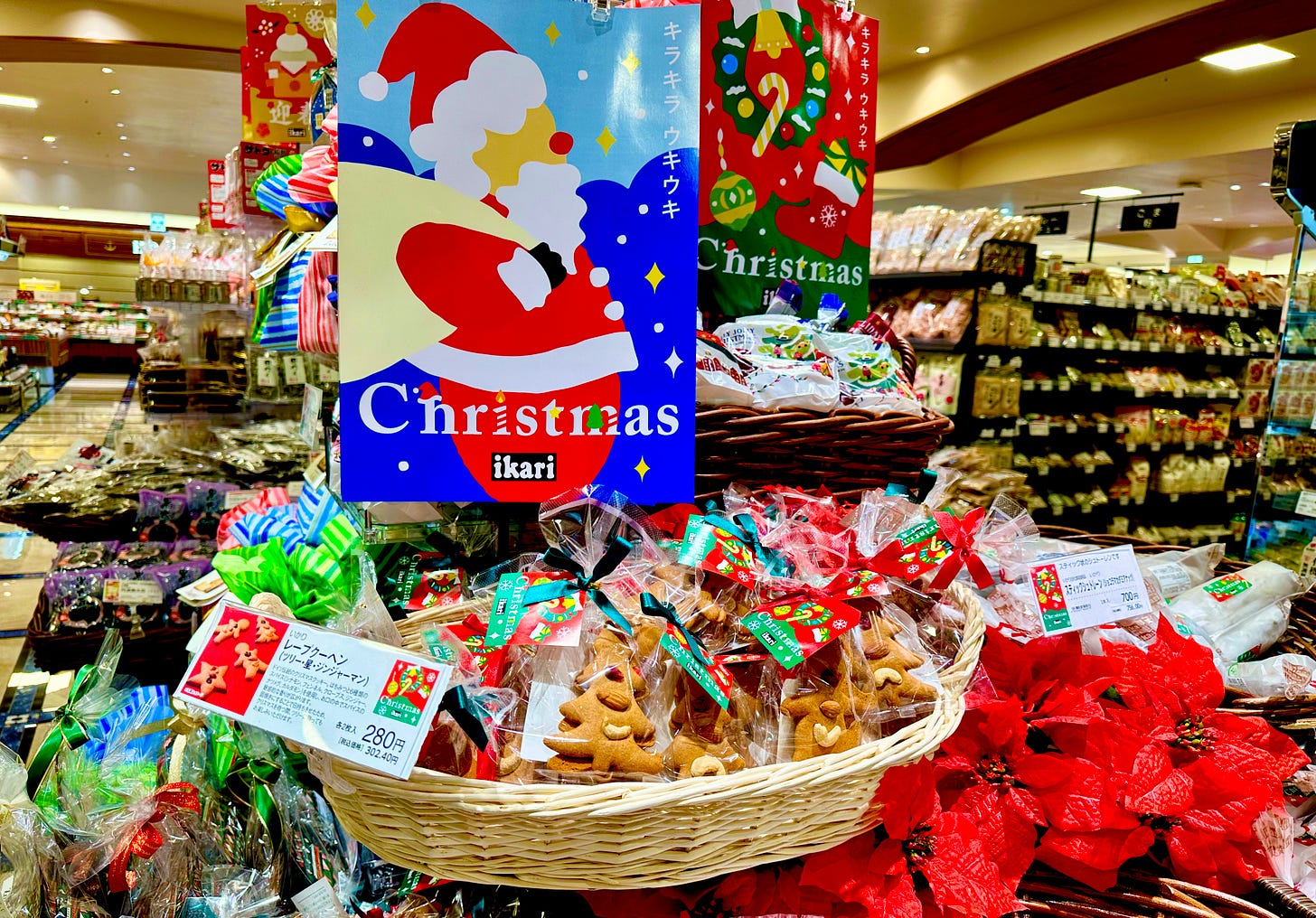
Of course, this is pretty much how it is in the U.S. during the mad run-up to the holiday, but I didn’t expect to witness the same phenomenon in Japan, where only about 1.5% of the population identify as Christian. It turns out Christmas is more of a big deal here than I had imagined, with lighted trees, wintry shop window displays and candies, cakes and cookies packaged in sparkling reds and greens and folks flocking to buy popular gift items.
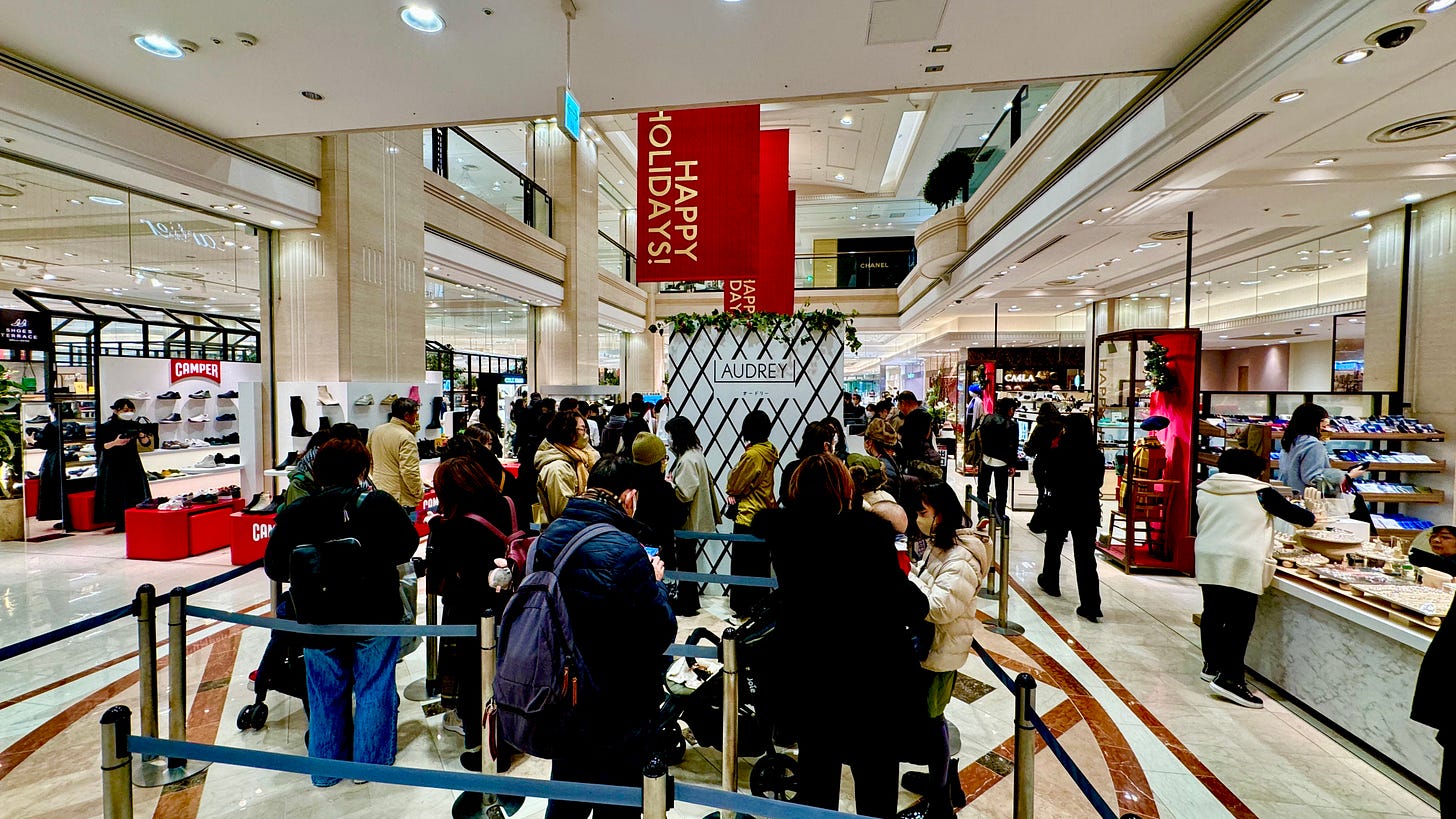
“There are about 1.9 million Christians in Japan, but Christmas is mainly a seasonal holiday,” explained our friend Matthew Kaufman, the Brooklyn-born deputy editor of Osaka.com who has lived in Japan since 1993 and took us on a delightful food and drink tour of Osaka this week. “Basically, after World War 2, Japan embraced all things American, such as movies and music. The American version of Christmas, with the catchy songs and decorations, had great appeal.”
One holiday tradition that has deep roots in Japan and grows from the same positive orientation toward U.S. culture is the custom of eating fried chicken from KFC on Christmas. Japan has a love affair with American fast food in general, with many franchises enjoying great success here—including MacDonald’s and Burger King.
KFC—then known as Kentucky Fried Chicken— became a phenomenon in the 1970s when the company launched its “Kentucky for Christmas” marketing campaign, with chicken standing in for the proverbial holiday turkey. It proved to be a phenomenal hit, with some 3.6 million Japanese families sitting down to KFC fried chicken on Christmas Eve or day in recent years.
“It was kind of popular when I was in high school,” my daugher-in-law Nagisa told me, but you had to order at least a week ahead of time in order to make sure to get it. The chicken would come with special plates that changed each year and that some people collected, she said.
Though the Japanese Santa doesn’t arrive in a sleigh or come down a chimney (most Japanese live in smaller apartments without a chimney!), many Japanese kids do believe in Santa. Nagisa said she did until she was 11 and discovered a cache of presents at the top of her parents’ closet. “I was so disappointed!” she said.
When we were in Japan this week, it was rare not to see Christmas displays at the local stores, from the many 7-Elevens to the large department stores to the pop-up Christmas markets to the smallest shops and bakeries in the warrens of covered arcades we visited in Kobe and Osaka.
What we didn’t see were a lot of Santa Clauses posing for pictures with kids at the shops nor was there any snow, at least not in the Kansai region where we’re staying. We did see many locals dressed in traditional Santa garb while doing their jobs.
There were a few imported stollen from Germany in the shops, but no traditional boozy fruitcake such as is popular in America (and that I wrote about in a recent post). Instead, the Japanese Christmas cake of choice is similar to a strawberry shortcake and is often ordered ahead from a market rather than made at home.
The colors of the cake—red and white—reflect the the Japanese flag and are both significant colors in Japanese culture. Together they often stand for happiness and joy. The cake’s origin may also stem from the country’s embrace of American culture following the war. To read more about this and how Christmas Eve is considered the Japanese Valentine’s Day, check out this article from TimeOut. For more on the history of the cake, click here.
Almost everywhere we went, from our hotel to the restaurants to the stores we visited, we heard Christmas songs—the same nonstop mix of “Silver Bells,” “Jingle Bells” and “The Christmas Song” that you might hear in the U.S. The difference was that most were jazz versions, showing the Japanese preference for yet another American art form.
For more, check out Jeff’s video postcard of Christmas in Osaka and Kobe below.
Final Thoughts
I didn’t grow up celebrating Christmas. Instead my parents, like so many other American Jewish families, made a point of turning the minor holiday of Hanukkah into a larger, more important celebration than it might otherwise have been. Here in Japan, the commercial aspect of Christmas doesn’t bother me quite as much as it does in the U.S., perhaps because the holiday has an almost decorative feeling to it—and the shopping surrounding it is less frenetic and more fun, with a large measure of whimsy and imagination incorporated into what’s on view in store windows. In Japan, art and commerce seem rather seamlessly blended—and not only at Christmas. At the Muji Grant Front Osaka store we visited, an ingenious display used the practical products the store sells to build ingenious mini worlds called “Small Muji.” Did it sell a lot of clocks, notebooks and staplers from the effort? I doubt it, but it sure was a kick to look at.
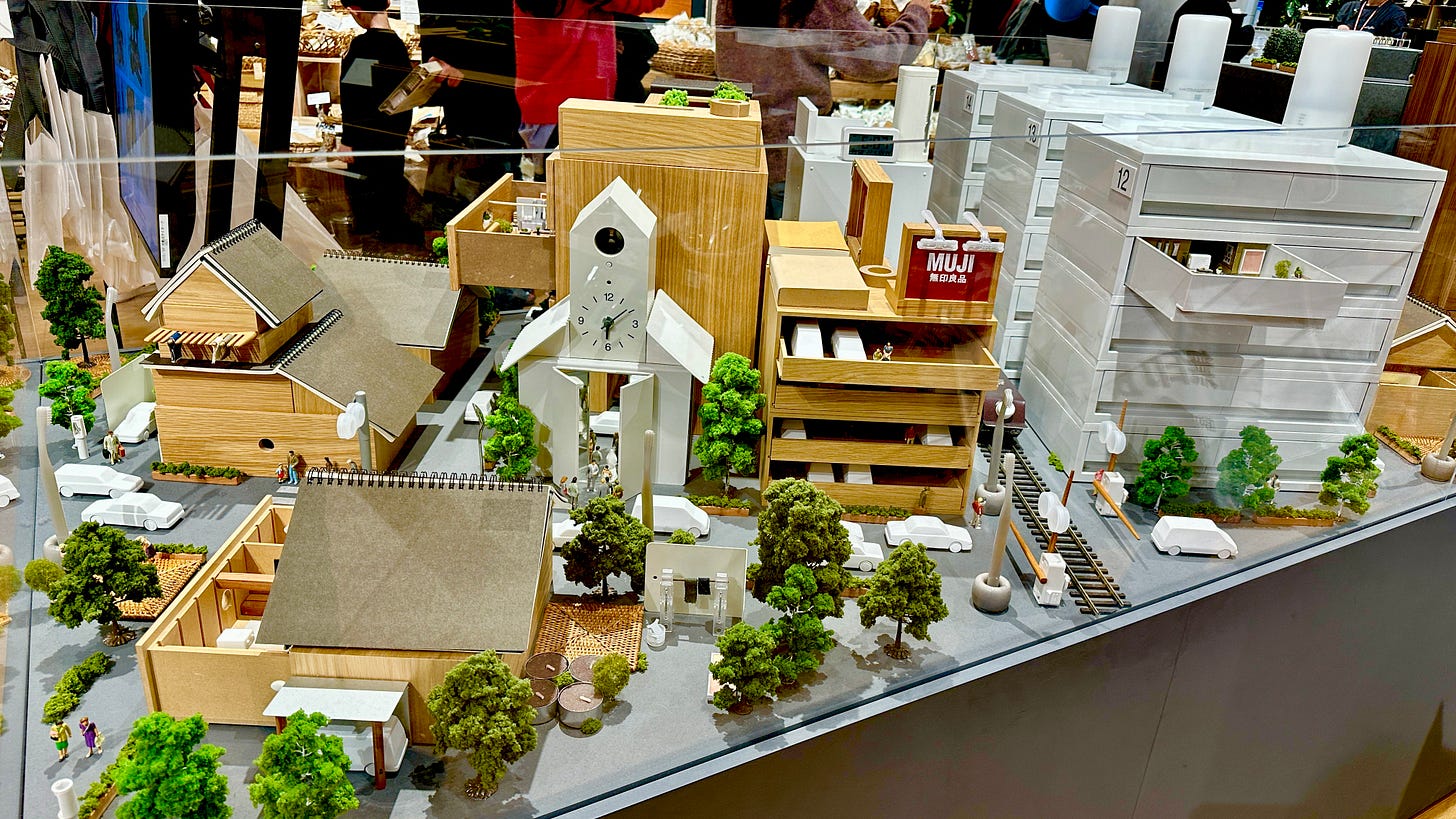
As usual, thanks for reading, liking, sharing, commenting and subscribing. I will have more to say about some of interesting eating experiences we had and foods we consumed during our visit to Japan a future post.
Wishing all of you the very happiest of holidays.
Ruth



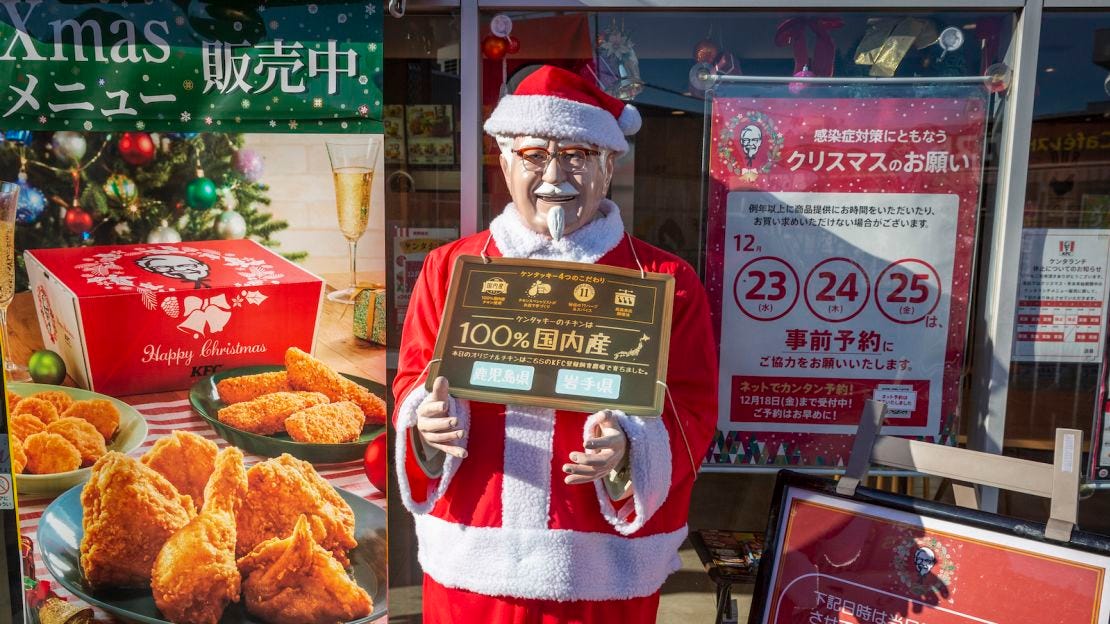

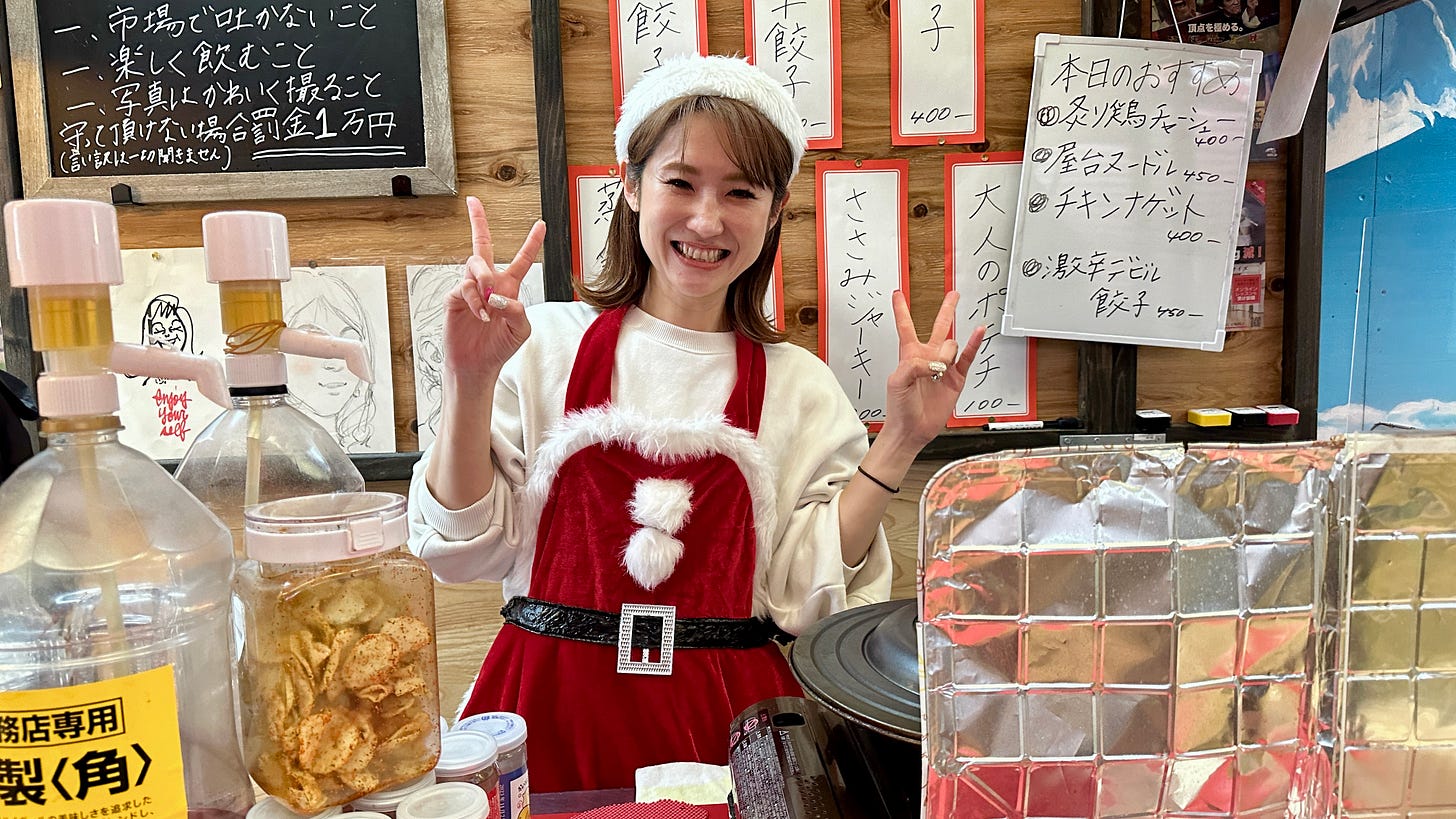

Thank you for sharing dear Ruth. Quite the country of contradictions. I have always associated Japan with solemnity and a general ‘quietness’ Assumptions aye?! I recently learned of the KFC craze in Japan and thought, “that can’t be?!” This looks like a wonderful Christmassy destination for Christmas enthusiasts like me, although I am not too keen on the consumerism. I love it bit can only take so much. I do love Japanese food and so I’m sure it would be an exciting experience all around. You have firmly put Japan on my travel list. Happy holidays ❤️
My daughter-in-law’s twin sister had Covid on Xmas day and was forced to stay home alone and eat KFC. I didn’t realise it was a thing in Japan until I read your newsletter. Fascinating!